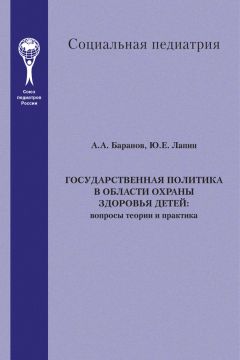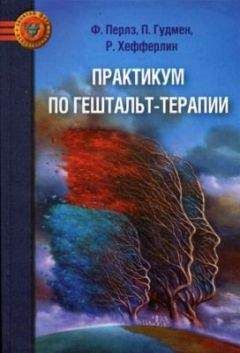Ознакомительная версия.
Ornstein, P. H. (1974a), A Discussion of Otto E Kernberg's «Further Contributions to the Treatment of Narcissistic Personalities» Internat.]. Psycho-Anal, 55: 241–247.
Ornstein, P. H. (1974b), On Narcissism: Beyond the Introduction, Highlights of Heinz Kohut's Contributions to the Psychoanalytic Treatment of Narcissistic Personality Disorders. The Annual of Psycho-Analysis, 2: 127–149. New York: International Universities Press.
Ornstein, P. H. (1975), Vitality and Relevance of Psychoanalytic Psychotherapy, Comprehensive Psychiat., 16: 503–516.
Painter, G. (1959), Proust. TheEarly Years. Boston: Little, Brown.
Painter, G. (1965), Proust. The Later Years. Boston: Little, Brown.
Palaci, J. (1975), Reflexions sur le transfert et la theorie du narcissisme de Heinz Kohut. In: Rev. Franc, de Psychoanal., 39: 279–294.
Pasche, E (1965), L'antinarcissism. In: Rev. Franc, de Psychoanal, 29:503–518.
Pfeffer, A. Z. (1961), Follow-up Study of a Satisfactory Analysis./ Amer. Psychoanal. Assn., 9: 698–718.
Pfeffer, A. Z. (1963), The Meaning of the Analyst After Analysis./ Amer. Psychoanal. Assn., 11: 229–244.
Pollock, G. H. (1964), On Symbiosis and Symbiotic Neurosis. Internat. J. Psycho-Anal.. 45: 1–30.
Pollock, G. H. (1971), Glückel von Hameln: Bertha Pappenheim's Idealized Ancestor. Amer. Imago, 28: 216–227.
Pollock, G. H. (1972), Bertha Pappenheim's Pathological Mourning: Possible Effects of Childhood Sibling Loss. /. Amer. Psychoanal. Assn., 20: 476–493.
Pontalis, J. B. (1975), Naissance et reconnaissance du self. In: Psychologie de la connaissance de Soi. Paris, Presses Universitaires de France, pp. 271–298.
Proust, M. (1913–1928), Remembrance of Things Past. New York: Random House, 1934.
Rangell, L., reporter (1955), Panel on: The Borderline Case./ Amer. Psychoanal. Assn., 3: 285–298.
Rank, O. (1929), The Trauma of Birth. New York: Harcourt Brace.
Reich, A. (1950), On the Termination of Analysis. In: Psychoanalytic Contributions. New York: International Universities Press, 1973, pp. 121–135.
Reich, A. (1960), Pathologic Forms of Self-Esteem Regulation. In: Psychoanalytic Contributions. New York: International Universities Press, 1973, pp. 288–311.
Robbins, W. S., reporter (1975), Panel on: Termination: Problems and Techniques./. Amer. Psychoanal. Assn., 23: 166–176.
Rosenfeld, H. (1964), On the Psychopathology of Narcissism. Internat. J. Psycho-Anal. 45: 332–337.
Rosolato, G. (1976), Le narcissisme. Nouvelle Revue de Psychoanalyse, 13: 7–36.
Sandier, J., Holder, A., Meers, D. (1963), The Ego Ideal and the Ideal Self. The Psychoanalytic Study of the Child, 18: 139–158. New York: International Universities Press.
Schafer, R. (1968), Aspects of Internalization. New York: International Universities Press.
Schafer, R. (1973a), Action; Its Place in Psychoanalytic Interpretation and Theory. The Annual of Psychoanalysis, 1: 159–196. New York: Quadrangle.
Schafer, R. (1973b), Concepts of Self and Identity and the Experience of Separation Tndividuation in Adolescence. Psychoanal. Quart., 42: 42–59.
Scharfenberg, J. (1973), Narzissmus, Identität und Religion. Psyche, 27: 949–966.
Schidt, J. vom (1976), Der falsche Wegzum Selbst. Munich: Kindler.
Schlessinger, N. Gedo, J. E. et al. (1967), The Scientific Style of Breuer and Freud in the Origins of Psychoanalysis. /. Amer. Psychoanal. Assn., 15: 404–422.
Schlessinger, N., Robbins, F. (1974), Assessment and Follow-up in Psychoanalysis./. Amer. Psychoanal. Assn., 22: 542–567.
Schur, M. (1966), The Id and the Regulatory Principles of Mental Functioning. New York: International Universities Press.
Schwartz, L. (1974), Narcissistic Personality Disorders — A Clinical Discussion./. Amer. Psychoanal. Assn., 22: 292–306.
Spruiell, V. (1974), Theories of the Treatment of Narcissistic Personalities./. Amer. Psychoanal. Assn., 22: 268–278.
Spruiell, V. (1975), Three Strands of Narcissism. Psychoanal. Quart., 44: 577–595. Stewart, W. (1963), An Inquiry into the Concept of Working Through. Amer. Psychoanal. Assn., 11: 474–999.
Stolorow, R. D. (1975), Addendum to a Partial Analysis of a Perversion Involving Bugs: An Illustration of the Narcissistic Function of Perverse Activity. Internat.. Psycho-Anal., 56: 361–364.
Stolorow, R. D. (1976), Psychoanalytic Reflections on Client-Centered Therapy in the Light of Modern Conceptions of Narcissism. Psychotherapy: Theory, Research and Practice, 13: 26–29.
Stolorow, R. D., Atwood, G. E. (1976), An Ego-Psychological Analysis of the Work and Life of Otto Rank in the Light of Modern Conceptions of Narcissism. Internat. Rev. Psycho-Anal., 3: 441–459.
Stolorow, R. D., Grand, H. T. (1973), A Partial Analysis of a Perversion Involving Bugs. Internat.]. Psycho-Anal, 54: 349–350. Stone, L. (1961), The Psychoanalytic Situation. New York: International Universities Press.
Straus, E. W. (1952), The Upright Posture. Psychiat. Quart., 26: 529–561.
Terman, D. M. (1975), Aggression and Narcissistic Rage: A Clinical Elaboration. The Annual of Psychoanalysis, 3: 239–255. New York: International Universities Press.
Thomä, H., Kachele, H. (1973), Problems of Metascience and Methodology in Clinical Psychoanalytic Research. The Annual of Psychoanalysis, 3: 49–118. New York: International Universities Press, 1975.
Ticho, G. (1967), On Self Analysis. Internat.]. Psycho-Anal, 48: 308–318.
Tolpin, M. (1970), The Infantile Neurosis: A Metapsychological Concept and a Paradigmatic Case History. The Psychoanalytic Study of the Child, 25: 273–305. New Haven: Yale University Press.
Tolpin, M. (1971), On the Beginnings of a Cohesive Self. The Psychoanalytic Study of the Child, 26: 316–354. New Haven: Yale University Press.
Tolpin, M. (1974), The Daedalus Experience: A Developmental Vicissitude of the Grandiose Fantasy. The Annual of Psychoanalysis, 2: 213–228. New York: International Universities Press.
Tolpin, P. H. (1971), Some Psychic Determinants of Orgastic Dysfunction. Adol. Psych.. 1: 388–413.
Tolpin, P. H. (1974), On the Regulation of Anxiety: Its Relation to «The Timelessness of the Unconscious and its Capacity for Hallucination.» The Annual of Psychoanalysis, 2: 150–177. New York: International Universities Press.
Volkan, V. D. (1973), Transitional Fantasies in the Analysis of a Narcissistic Personality./ Amer. Psychoanal. Assn., 21: 351–376.
Waelder, R. (1936), The Principle of Multiple Function: Observations on Overdetermination. In: Psychoanalysis: Observation, Theory, and Application. New York: Internat. Univers. Press, 1976, pp. 68–83.
Wangh, M. (1964), National Socialism and the Genocide of the Jews: A Psychoanalytic Study of a Historical Event. Internal.]. Psycho-Anal., 45: 386–395.
Wangh, M. (1974), Concluding Remarks on Technique and Prognosis in the Treatment of Narcissism./. Amer. Psychoanal. Assn., 22: 307–309.
Weigert, E. (1952), Contribution to the Problem of Terminating Psychoanalysis. Psychoanal. Quart., 21: 465–480.
Whitman, R. M., Kaplan, S. M. (1968), Clinical, Cultural and Literary Elaborations of the Negative Ego-Ideal. Comprehens. Psychiat., 9: 358–371.
Winnicott, D. W. (1953), Transitional Objects and Transitional Phenomena. Internat. J. Psycho-Anal., 314: 89–97.
Winnicott, D. W. (1960a), Ego Distortion in Terms of True and False Self. In: The Maturational Processes and the Facilitating Environment. New York: International Universities Press, 1965, pp. 140–152.
Winnicott, D. W. (1960b), The Theory of the Parent-Infant Relationship. In: The Maturational Processes and the Facilitating Environment. New York: International Universities Press., 1965, pp. 37–55.
Winnicott, D. W. (1963), From Dependence Towards Independence in the Development of the Individual. In: The Maturational Processes and the Facilitating Environment. New York: Int. Univ. Press, 1965, pp. 83–92.
Wolf, E. S. (1971), Saxa Loquunter: Artistic Aspects of Freud's The Aetiology of Hysteria. The Psychoanalytic Study of the Child, 26: 535–554. New Haven: Yale University Press.
Wolf, E. S. (1976), Ambience and Abstinence. The Annual of Psychoanalysis, 4: 101–115. New York: International Universities Press.
Wolf, E. S., Gedo, J. E. (1975), The Last Introspective Psychologist Before Freud: Michel de Montaigne. The Annual of Psychoanalysis, 3: 297–310. New York: International Universities Press.
Wolf, E. S., GedoJ. E., Terman, D. M. (1972), On the Adolescent Process as a Transformation of the Self./ Youth, Adol. 1: 257–272.
Wolf, E. S., Trosman, H. (1974), Freud and Popper-Lynkeus./ Amer. Psychoanal. Assn., 22: 123–141.
Wurmser, L. (1974), Psychoanalytic Considerations of the Etiology of Compulsive Drug Use/ Amer. Psychoanal. Assn., 22: 820–843.
Wylie, A. W, Jr. (1974), Threads in the Fabric of a Narcissistic Disorder. / Amer. Psychoanal. Assn., 22: 310–328.
Zeigarnick, B. (1927), Über das Behalten von erledigten und unerledigten Handlungen. Psychol. Forsch., 9: 1–85.
Когда я веду речь о психологии самости, не уточняя термина, я имею в виду психологию самости в широком смысле.
Мистер М. проходил анализ у студентки под наблюдением автора (см. Kohut, 1971, р. 128–129).
Ретроспективно, пожалуй, здесь следует упомянуть, что объяснение, которое было дано направленности пациента А. на своего отца (см. Kohut, 1971, р. 67), неточно. Основываясь на собственном опыте работы с несколькими аналогичными пациентами после завершения анализа мистера А., я бы теперь предположил, что интенсивная идеализация мистером А. своего отца (и, следовательно, сильнейшая травма из-за разочарования в нем) была обусловлена его предыдущим разочарованием в зеркально отражающем объекте самости, а не его разочарованием в более архаичном идеализированном объекте.
Здесь я не могу удержаться от искушения поделиться с читателем выдержкой из письма коллеги, который несколько лет назад в благодарность за осознание некоторых сторон собственной личности, полученное при изучении моей книги, рассказал мне, что на развитие его личности решающим образом повлияла травма, полученная им в раннем детстве из-за внезапной потери идеализированного объекта самости — своего отца. Он писал, что вследствие этой потери он обратился к себе и — в результате переноса, развившегося ко мне при изучении моих работ, — к писательской деятельности. «Похоже на то, что объект самости (для меня) — это прежде всего письменное слово… [что] я развил некоторое умение находить в литературе нечто такое, что бы помогло мне в нужде… Таким образом, у меня появилась возможность обращаться за помощью к самым лучшим отцам в мире, благодаря их письменному слову…» Затем следует утверждение, описывающее шаг в развитии, аналогичный тому, что совершил мистер М.: «Моя старая тетя, — пишет он, — говорила, что я научился читать еще до детского сада… Я помню, что обычно они закрывали этикетки на бутылках с соусом, чтобы я не читал их за столом. По-видимому, врачи рекомендовали ограничить меня в столь рано обретенном стремлении читать. Книги были убраны, а потому я читал этикетки».
Читатель, знакомый с моими идеями, увидит, что здесь я делаю различие между генетическим подходом и этиологическими рассуждениями (ср. Kohut, 1971, р. 254–255, сноска. См. также: Hartmann, Kris, 1945).
Образование нейтрализующих микроструктур через переживание оптимальной фрустрации описано в работе Кохута и Зейтца (Kohut, Seitz, 1963, p. 137). Термины «макроструктура» и «микроструктура» использовались также в соответствующем контексте Гиллом для обозначения психических инстанций и закрепления следов памяти и идей (Gill, 1963, р. 8, 51, 135–136).
Ознакомительная версия.



